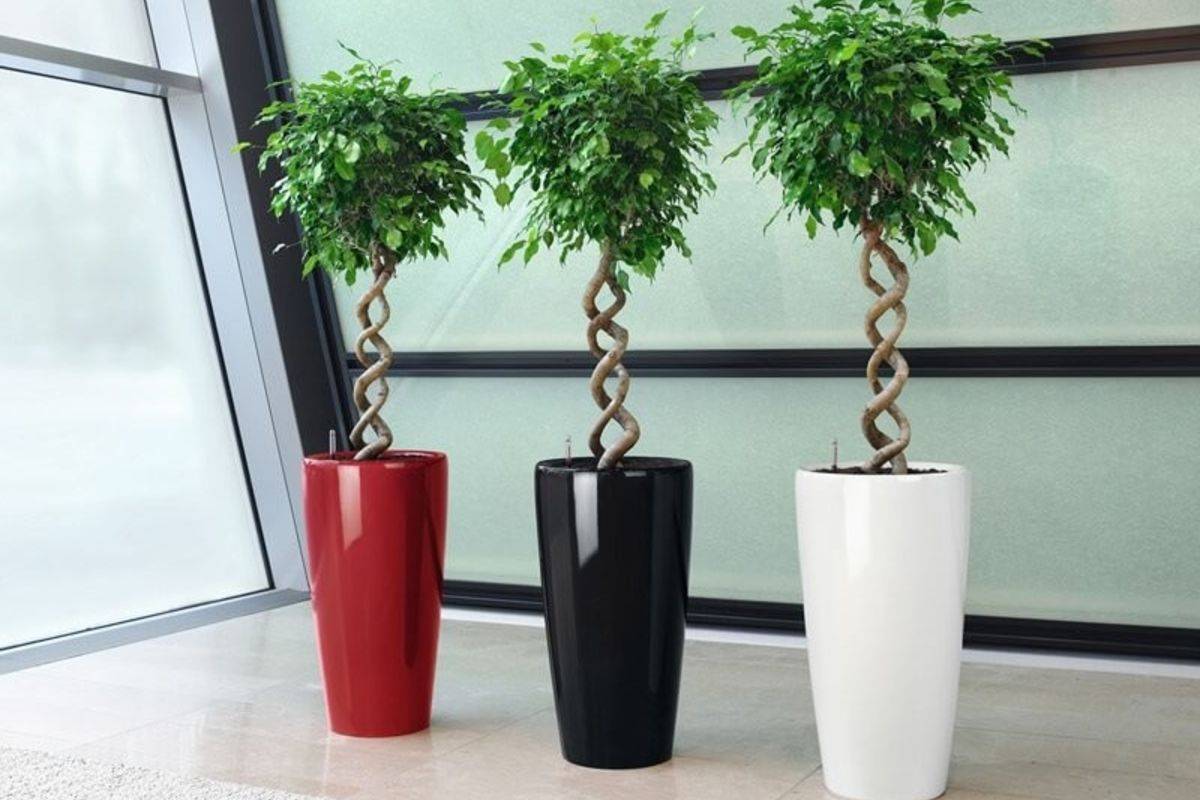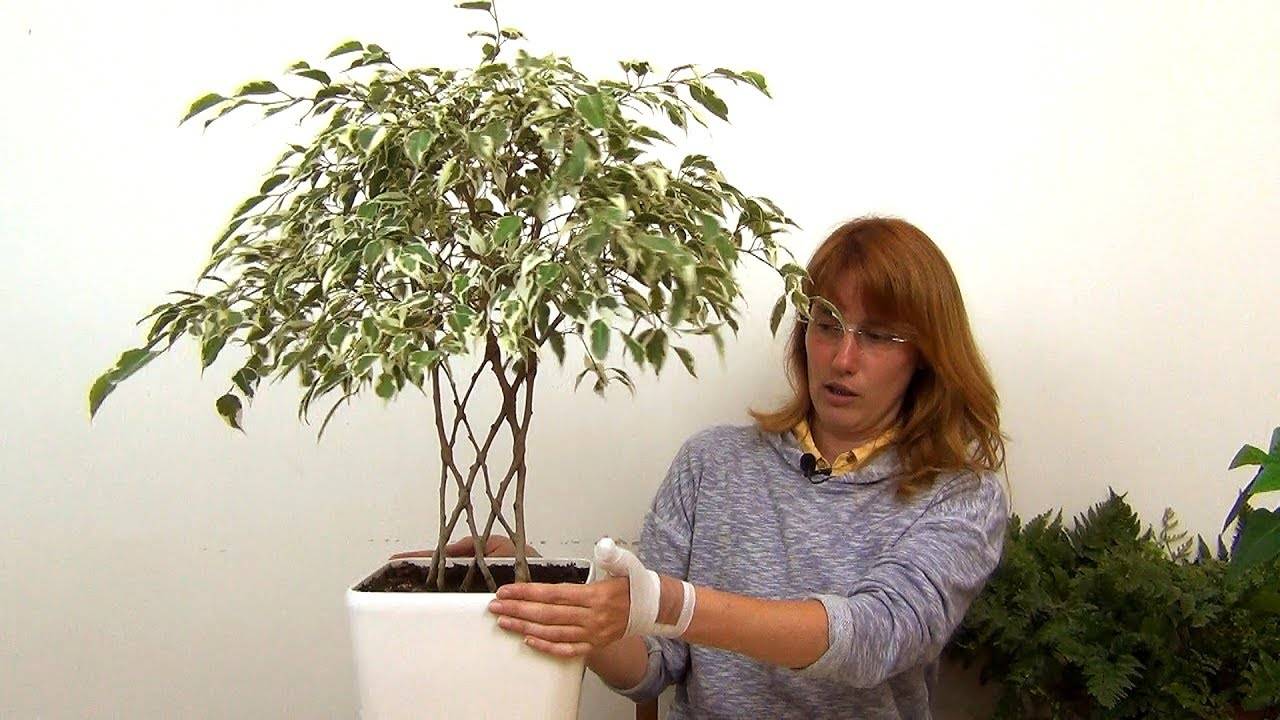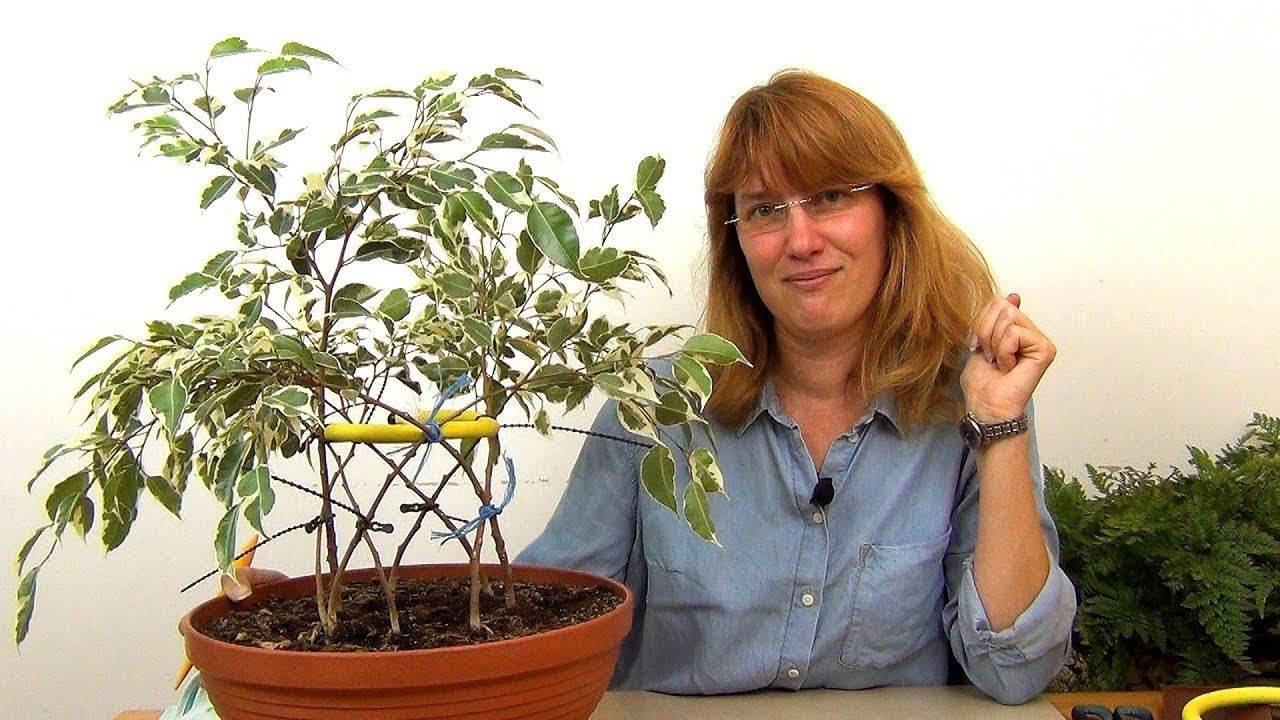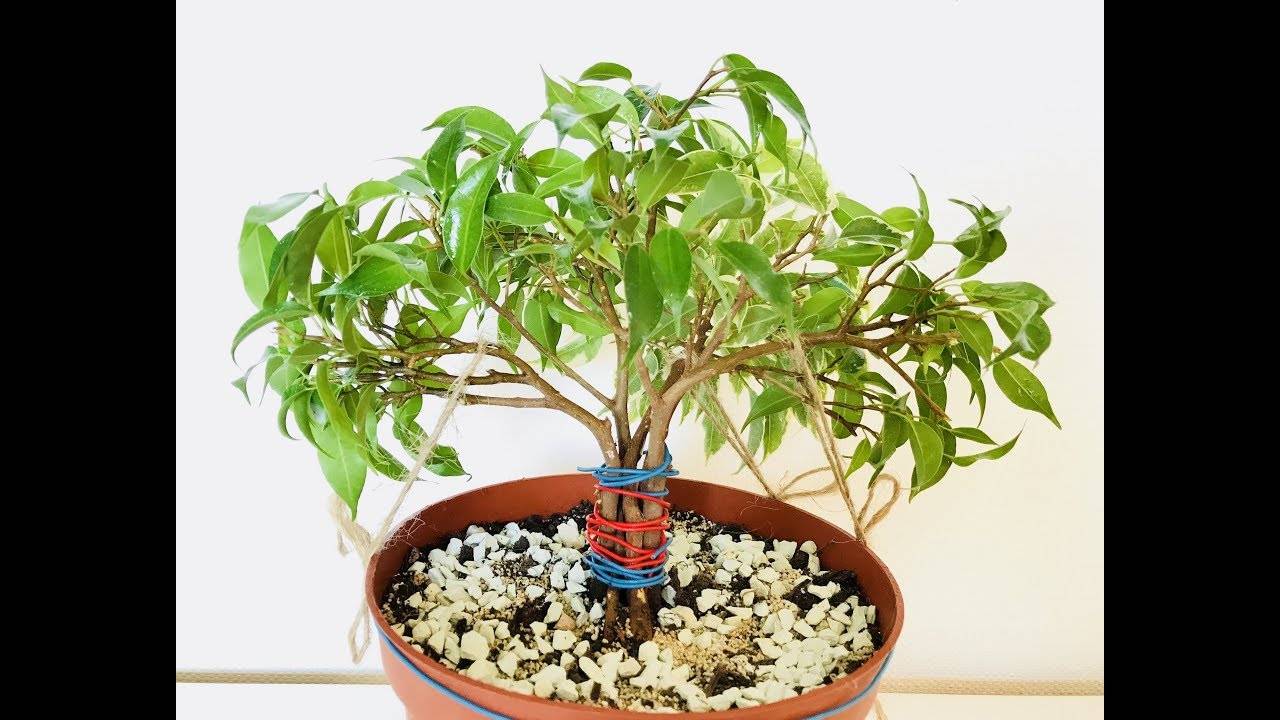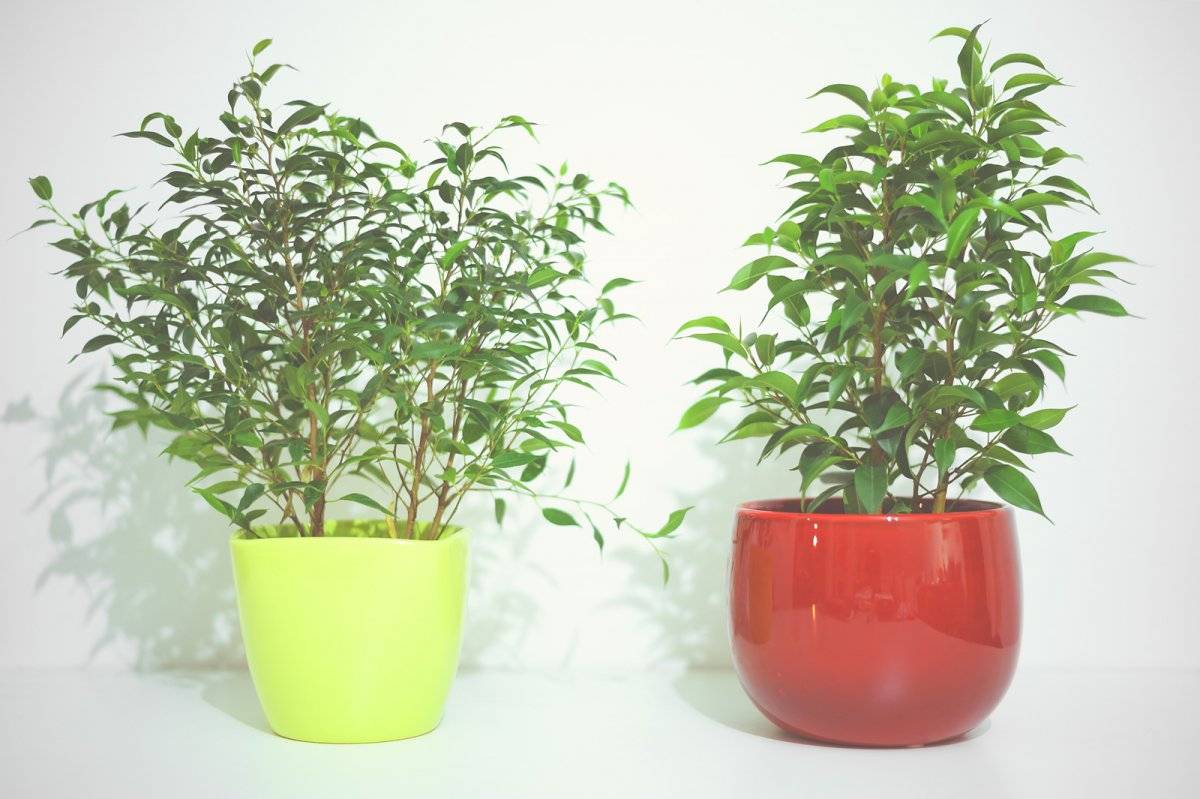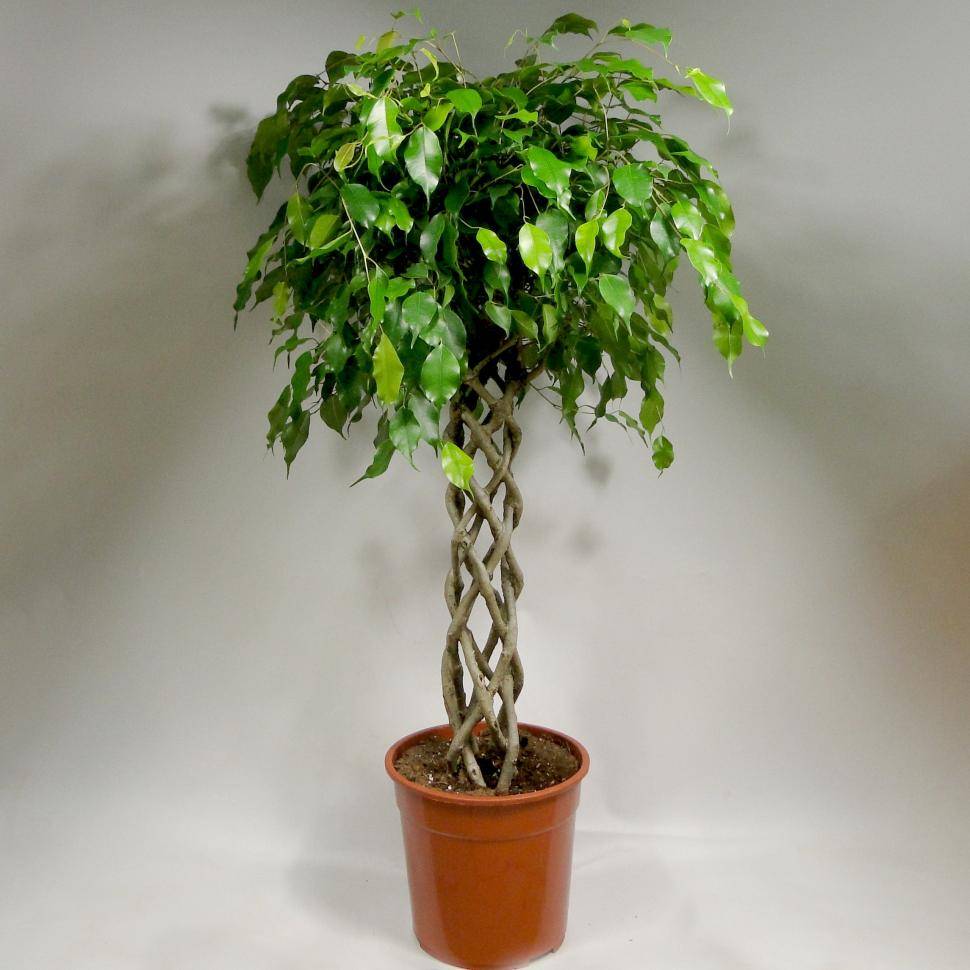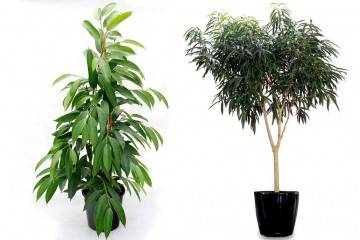Weaving ficus Benjamin at home
Content:
While the ficus is young, no bark will form on its stem. At the same time, the trunk remains flexible and pliable to any deformations. Weaving ficus Benjamin is an actual option for decorating a room, a greenhouse, a winter garden or a balcony. The plant itself is unpretentious in care and has a very attractive appearance. At the same time, weaving Benjamin's ficus at home will not be difficult even for a novice florist.
Why do weaving
Ficus Benjamin is intertwined not only for the attractiveness of the plant, although this is also one of the goals of this procedure. Additional weaving tasks:
- ficuses grow rapidly. In order not to worry about increasing the growth of the stem, not to design awkward supports, you need to decorate it;
- the beautiful shapes of the flower trunk will ideally fit into any composition of a small or large greenhouse;
- lovers of digging with indoor plants can pay a lot of attention to this kind of care.
The main purpose of weaving is determined by the needs of the grower.
Types of ficus weaving
There are several options for ficus weaving, the choice depends on the preparation of the plant itself. There are several options for how you can weave a ficus.
Spiral
The most popular and simpler arrangement of a flowerpot with a beautiful ficus composition. Circular weaving is elementary, but effective. It is made by braiding the support. As it grows, the stem is bent along the contour of the selected base. After fixing the shape of the barrel, the support can be removed.
Hedge
This version of the composition is complex. First you need to plant the seedlings in a row. Further, the stems can be intertwined in accordance with the diverse ones.
Pigtail
To weave a braid from Benjamin's trunk, you need to wait until the thickness of each seedling reaches 1 cm.Further, weaving is performed according to the principle of how the strands of hair are folded.
Column
The difficulty may lie in the splicing of adjacent trunks. Inexperienced growers can damage the flower too much, which can lead to the death of the specimen.
How to prepare a plant
In order to braid the trunk of a houseplant in the future according to the chosen scheme, it is worth preparing the seedlings correctly. This applies to planting, leaving, forming weaving. You can braid the trunk of an exceptionally young seedling, so you need to plant the shoots, and then dull them to gradual processing. Plant preparation stages:
- The interlacing of the trunk can be carried out until the sprout reaches more than 10 cm in height. With a gradual enlargement of the plant, it is possible to merge adjacent trunks in accordance with a certain technology.
- To create an individual composition, you should use at least three seedlings. But it is better to plant more than five in one pot. For planting, it is recommended to use a container with a large diameter. It is preferable to use a square or round tub. The size of the container directly depends on the number of copies.
- It is worth creating compositions from shoots that have the same stem diameter. Otherwise, the final picture will look messy. To avoid overgrowth of one specimen and depletion of another, you need to produce the same watering, feeding and pruning.
- Saplings need to be planted in March in order to start the ficus weaving procedure in mid-May. Prepare soil rich in trace elements, lay a drainage layer on the bottom of the pot.
If you do not take into account one of the factors of plant preparation, then the trunks will not intertwine, or the composition will turn out to be sloppy.
How to weave a ficus
To intertwine the stems of plants, you need to know some rules. There are several basic ones that relate to the procedure at an almost professional level:
- no matter which weaving option will be used, you need to plant seeds at a distance of 3-5 cm from each other;
- to make the trunk even more pliable and soft, watering must be done 12 hours before the procedure;
- in the process of growth, you need to cut off the side shoots. The crown is formed at the very top;
- in the process of work, you can control the strength of weaving, evenly placing each element of the composition. To achieve this, it is advisable to prepare a base frame;
- then flexible stems should be laid neatly according to a given pattern. If necessary, threads can become temporary fixation;
- you need to braid carefully so as not to overtighten the plant. Otherwise, the sprouts may die due to improper juice circulation. The threads are applied at an angle of 45 °.
Plant stem processing
To make the weaving seem more attractive, you need to form the correct crown. For this, excess shoots and shoots are trimmed. If this is not done, the leaves will begin to weigh down the processes and tilt downward.
You cannot cut more than five branches at a time. The cut site must be treated with an antiseptic or activated carbon powder. Do not use too many products to cover open areas.
Further care of the flower
It is not enough to plant a flower correctly and decorate the trunk beautifully, you also need to take care of the ficus. The plant loves abundant watering and spraying of the crown. Therefore, it is important to wipe the leaves with a damp cloth at least once a week.
Braided trunks must be constantly inspected for damaged areas, the tightening force of the threads, the principle of trunks breakage. You need to put the plant in partial shade so that the leaves do not wither.
You can decorate the house with a completely unique flower, creating a beautiful composition by interweaving the trunks of several ficuses. For this, the Benjamin variety is suitable. The principle of creating figures from plants is carried out thanks to the correct crease and bend of the trunk.
